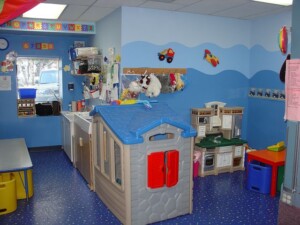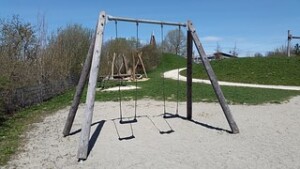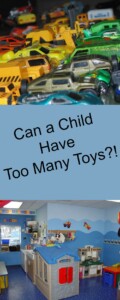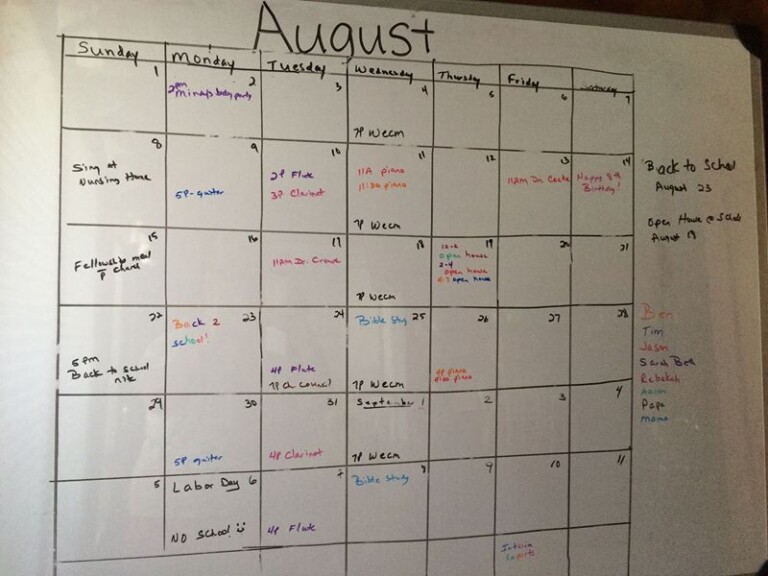Can a Child Have Too Many Toys?!
 Yes, but how many are too many?!
Yes, but how many are too many?!
The child with the fewest toys is the happiest, most creative, and most intuitive. I don’t have any studies to prove this, but I know this to be true beyond the shadow of a doubt. How do I know? Experience and Observation. I don’t have any statistics, but I know I’m right. If you disagree, then prove me wrong.
Experience indoors
When I was a kid, we had some toys. “Inside” toys included (from my favorite memories) marbles, carom, checkers, wooden spools, a game of jacks, and “lite” [a Pennsylvania dutch word for “people”]. We had a marble rack with which we created shorter and longer trains, sometimes racing to see whose “train” sped down the rack the fastest or the farthest without stopping. An older sibling was the bomb in carom, and we tried to beat her in this game. Sometimes we played two to a team, and sometimes individually. Eye-hand coordination, planning, and working as a team were all benefits of these games.
Any unused catalog was fair game for us to use to create our own families from the people we cut out of the catalogs. We spent hours choosing and creating the people we wanted to have in our “families” and acted out events happening in the community, church, or school, Paper dolls were off limits because of budgeting, and today I’m glad it was so, because paper dolls with pre-made outfits are a stifle to creativity. We had more fun creating our own wardrobes by cutting out clothing from paper bags and fabric scraps, then taping or gluing pieces together.
Every one of these games allowed for improvement of physical dexterity, eye-hand coordination, imagination and pretend, and learning to get along. We were better off because we had less, and today’s kids would be better off as well if they had to improvise for play.
 Experience outdoors
Experience outdoors
We also had enjoyment outdoors that lent itself to plenty of exercise and fun. In addition to a chicken-coop-turned-playhouse, there was a sandbox and one swing (for the six of us) hanging from a maple tree. Plus, the woods was at our disposal. We had plenty of horses (sticks) to ride as we rescued cowboys from Indians, and we heated water in a tin pan over a fire in the pasture (yes, we did). We created our own Pony Express stations at designated trees in the woods.
Old blankets and quilts, hung on the wash line, created houses with rooms, doors, and windows. Even wintertime found us outside- sledding, ice skating, and building igloos in below freezing temperatures. What amazes me is that we never heard complaints from our mother or older siblings. They were the ones who had to take time to help us get bundled and then unwrapped after a day in the snow. The dining room had that familiar smell of wet clothing dripping as it dried, but no scoldings came to us for the extra work we caused. Our immune systems were replenished by playing outside in those temperatures.
Children need Time, not Toys
I cannot tell you how many times folks told our mother how creative we were. Ours was not above-average IQ. Most of us weren’t stellar students, and library books were constantly overdue because they were hidden under piles in our bedrooms. Our creativity came, not from brains or brawn, but from being allowed to play and pretend like there was no tomorrow. We had adults who participated with us in games; they gave us time instead of toys.
Our greatest asset was the adults in our lives who allowed us to play and did not complain about the mess we made or the extra work we caused from our play. Share on XCertainly, we had to help put our stuff away. Yet, I know our play created more work and effort for them when it came time for washing blankets and drying smelly mittens. Many moms today don’t want the extra work or hassle, so their kids become restless and bored.
 Our in-home laboratory
Our in-home laboratory
Dave and I raised six kids. We had our disagreements about what was a “mess” in the house and what was creativity. In giving a home to over two dozen foster kids, those same disagreements sometimes surfaced. Fortunately for the kids, I allowed more mess than he did – and since he allowed the house was my domain, the messes continued. Whether playing in the leaves in the fall or the woods in summer, our kids never lacked for playtime. Thus, their creative juices flowed continually.
It’s not because our kids were smarter than others or because we provided them with plenty of playthings. They surely didn’t inherit it from their parents any more than any other kids inherit creativity from their parents. Yet, so many of their friends (and their teachers) remarked at their creativity. Kids loved to come play at our house because (they told their parents) it was always so much fun.
You know why it was so much fun? When there’s no television and no social media to take up a kid’s attention, when there are fewer toys than kids, they find a way to be entertained. So they do. Do not knock this until you’ve tried it for an entire month.
Guaranteed, if your kid continues to be bored, a job list will make certain he finds a way to entertain himself. You can check out the link! When a child is allowed to “make a mess” in play, he experiences freedom to develop and create. Helping clean up the mess, however, often takes time of an adult.
 So what’s a parent to do about those toys?
So what’s a parent to do about those toys?
You need to decide if you want your child to be creative or bored. Choose whether you want a generous or a selfish child. Answer those two questions, and you'll know what you need to do with those too many toys. Share on X
Get rid of the toys they hardly play with – or rotate them around so they only have a few for each child. Your children can choose toys that are in good condition and help pack them up to give away to children who hardly have any toys. Yes, they can. It can become a life lesson where they learn to choose between necessity and hoarding of wants.
It’s true that the more a kid has, the more he wants. The more he wants, the more he thinks he has to have – and then he becomes dissatisfied and bored. Limit his toys and watch what happens.
When it’s birthday or Christmas time, help your family members consider what they give your kids. You can announce to the grandparents, uncles and aunties that your child will be allowed to play with all his toys for two weeks (or make it three) after the event. Then he will help choose which ones he keeps and which ones he gives away. If he likes the new toys better, he can give away some older toys.
Ask yourself: how many toys does your child need to help him be creative, learn teamwork, become stronger physically, and develop dexterity? Ask yourself: which of the toys he owns now are the ones that provide all of the above? You’ll know which ones to dispose of and which ones to keep.
Keeper Toys
Keep the toys that help a child develop eye-hand coordination, teamwork and getting along with others, develop emotionally, math, and social skills. Every child should have something with which to build. Designing and building brings out individuality. These items include blocks, Legos, marbles, a sandbox. Keep those toys.
Every child needs toys that help develop eye-hand coordination: puzzles, board games, carom, pick-up sticks, Jacks, marbles, and balls. Children need toys that help them develop mentally. These toys include board games with numbers, board games with strategies, and games with required reading.
Toys and props that help kids act out scenarios in real life are vital. They need to create their own drama with cowboys, criminals, school classrooms, church activities, and real-life heroes. Playing school, doctor, library, or any other occupation helps children play out real-life scenarios. They can improvise with whatever is at hand.
Children need activities and games that help build the body: running, jumping, swinging. They need to play, but they don’t need a lot of toys for play. Kids need space, imagination, and props they can use to prepare their own stage and settings. Learn to let them play and pretend, and you will find they really don’t need all those too many toys.
Research shows play can improve children’s abilities to plan, organize, get along with others, regulate emotions and cope with stress. They don’t need a lot of toys to accomplish this. Give them more time instead of toys.








These are words of wisdom. Thanks for sharing.
Thanks. I learned the hard way.